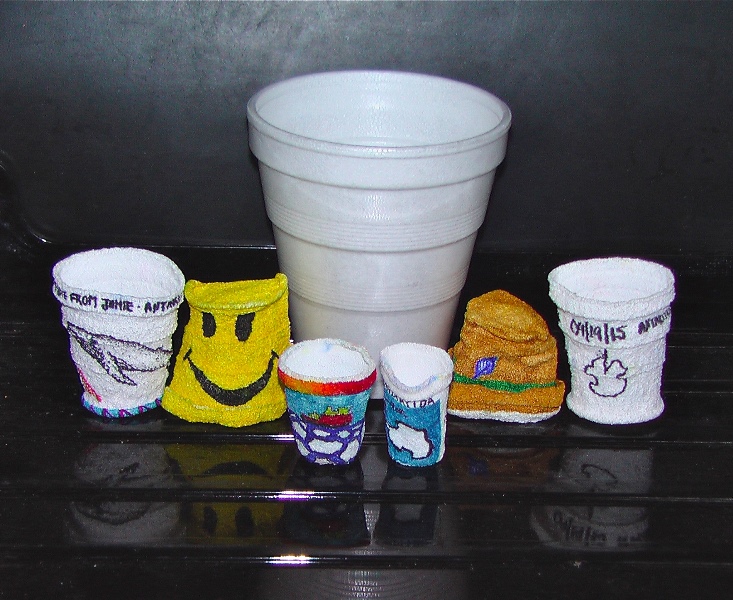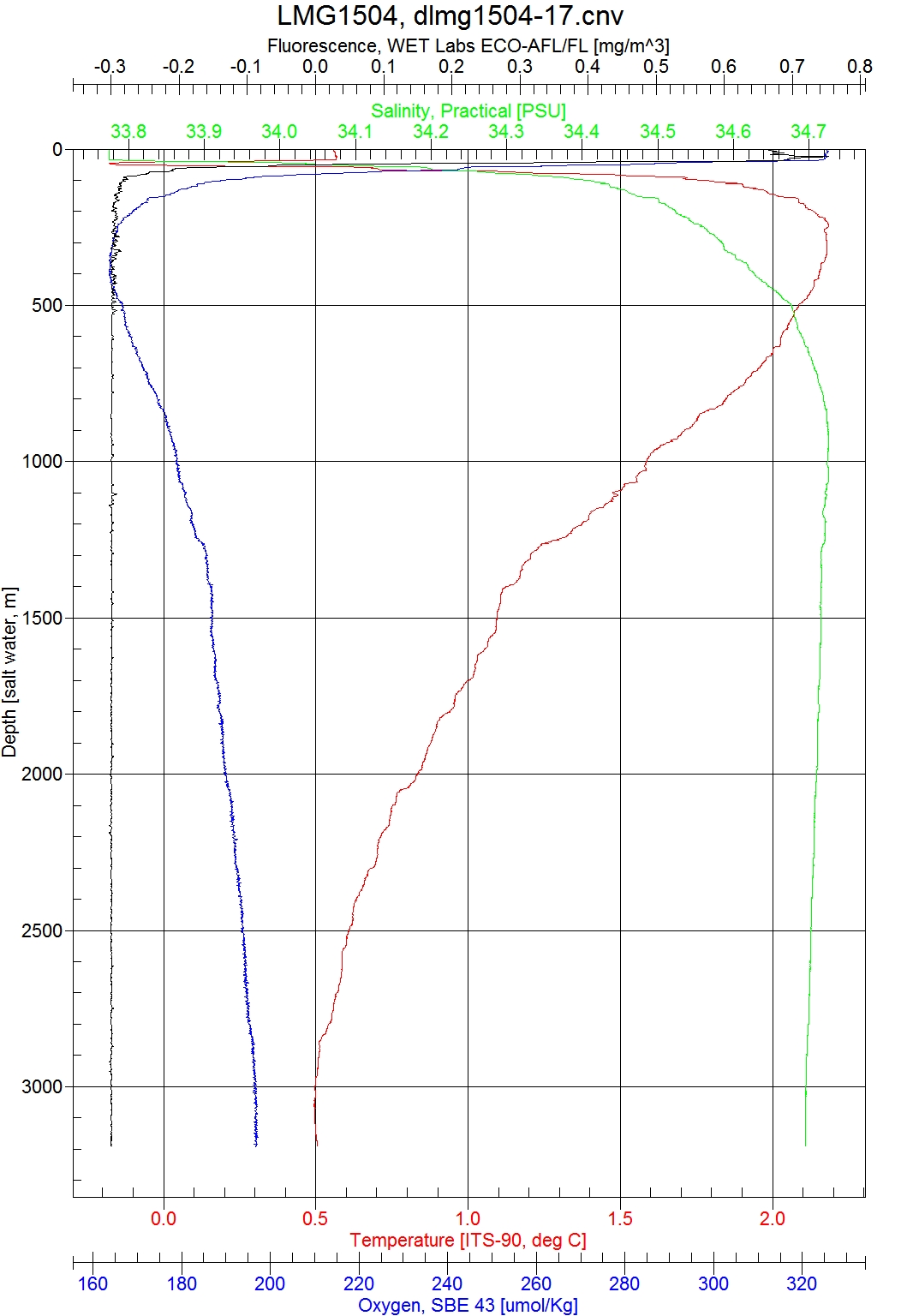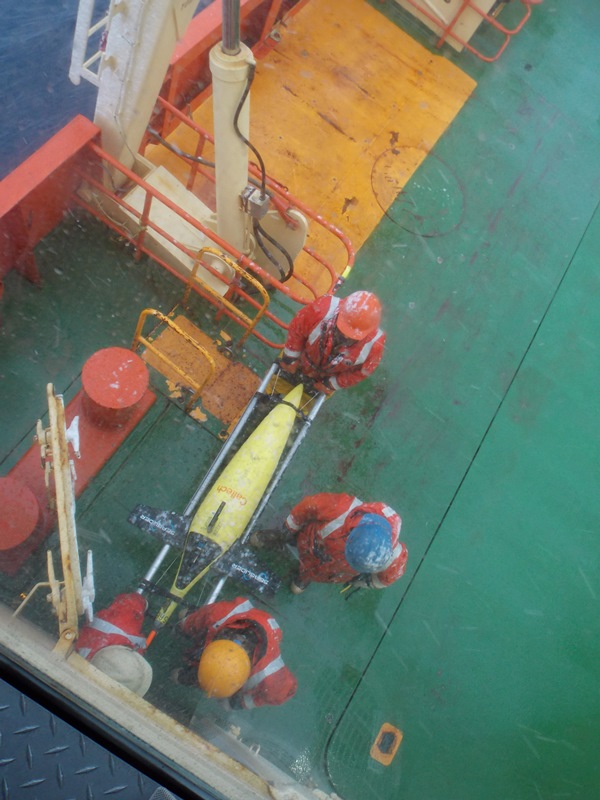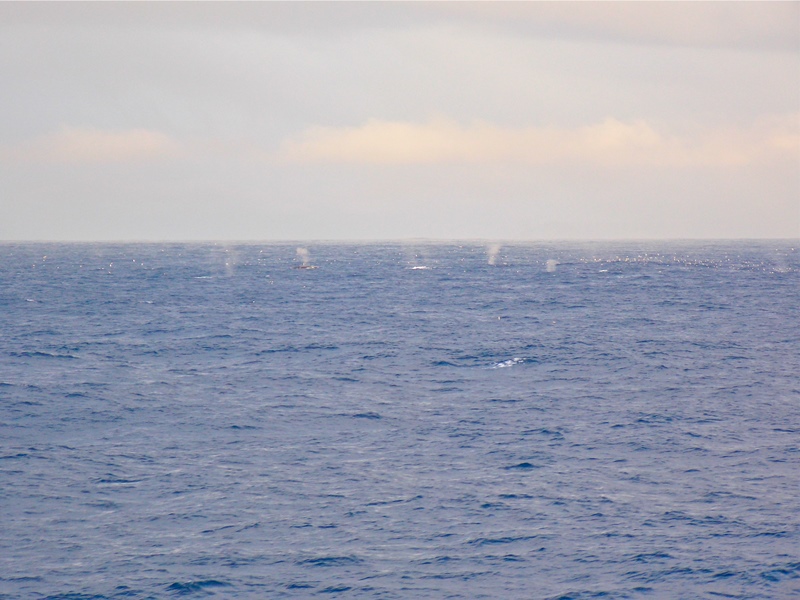By Jamie Sibley Yin
Dr. Valerie Loeb is an adjunct professor at Moss Landing Marine Labs. Currently, she functions as an independent Antarctic ecosystem research scientist collaborating with Jarrod Santora of UC Santa Cruz. In April, she headed out to sea with a new NSF funded project entitled "Pilot Study: Addition of Biological Sampling to Drake Passage Transits of the 'LM Gould'". The following are updates from the field by Jamie Sibley Yin who is in charge of communications.
04/26/15 - Let’s Get Physical

This week’s research has been dedicated to the physical oceanographers onboard. These scientists from Scripps Institute of Oceanography, Caltech, and Princeton are studying how water masses interact in the Antarctic. They accomplish this by recording temperature, salinity, and chlorophyll levels at different depths within the water column using a variety of instruments. The area they are sampling is back in Drake Passage--about a 40 hour steam from Palmer.
The instruments they have used are expendable bathy thermographs (XBTs), conductivity temperature depth censors (CTDs), and a glider, which they are recovering. Gliders are autonomous underwater vehicles (AUV) that are controlled remotely. At the beginning of the cruise they used XBTs to measure abiotic (physical) factors along the south-bound transit line across Drake Passage. XBTs are silver, oblong instruments about the size of a water bottle that are “shot” from the side of the boat. They take measurements as they fall to the ocean floor and send data back to the ship, relayed through a copper wire. XBTs are not recovered and rest forever on the ocean bottom.

The group is now using conductivity temperature depth censors (CTDs) to record abiotic factors throughout the water column. The CTD machine is a barrel-shaped cage of pvc pipes that surround a carousel of canisters. The CTD lives in the “Baltic” room. To deploy the machine, a two-story door opens and the CTD is pushed out the door into the frigid water. As it descends towards the ocean bottom it transmits data, displayed as zigzagging colored lines on the computer screen. The lines are oxygen, fluorescence, temperature, and salinity. Fluorescence is a measure of primary production. CTD plots give us information about different water masses and their boundaries in the water column. The CTD schedule happens around the clock, therefore the crew and scientists are split into day and night shifts. As I get ready for bed, people are having breakfast and starting their day.

The glider recovery was a group effort. The glider is a yellow, torpedo-like, $150,000 instrument. It was left in the Drake four and half months ago to collect temperature and salinity readings at different depths. A GPS signal transmitted from the glider sends its location to a computer at Caltech every 24 hours. We got to its approximate location around 11:30pm. This was the position the glider had last pinged at midnight the night before and had no doubt drifted since that time. We had to wait until midnight again to get a new position. I said I would help look for it with everyone but felt dubious at actually spotting it. The only portion of the glider protruding from the water was an orange stick with a small swath of reflective tape wrapped around it. The whole thing we were trying to spot was about the size of a flare.

Chances seemed slim. Nonetheless, the 3rd mate, Rob, spotted the glider just as it was getting light, around 7:30am. Someone kept an eye on the location and the zodiacs were manned to retrieve the instrument. Conditions seemed ideal—sunshine, flat water, not a cloud in sight. It felt like we had found a needle in a silver haystack. Half an hour later the zodiacs were still not in the water and everyone had dispersed. Turns out the glider had been lost sight of. Everyone was on the bridge searching anxiously, eyes plastered to binoculars. An hour and a half later, and still no sign of the glider. The GPS said we were basically on top of it but no one could see it. In the meantime the swell had picked up, and sunshine turned to rain. Someone spotted it. Rain turned to sideways sleet. Three people stood outside, pelted by sleet, and pointed at the glider location while the zodiac was (quickly) loaded and deployed. The zodiac came in and out of view as it bobbed over three meter swells. The glider was eventually recovered with only a minor mishap. Guiliana, my friend, and scientist at Caltech was climbing out of the zodiac onto the ladder, a trough came by and she was left hanging on the bottom rung of the ladder, as she pulled herself up another wave came and soaked her to her armpits. The crew hauled her up and threw her on deck. After peeling off her soaked clothes, she led the way in glider inspection and cleaning. All was well, and everyone breathed a collective sigh of relief.


